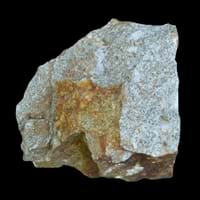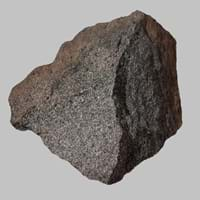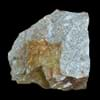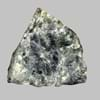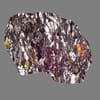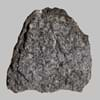Definition
Tonalite is a coarse-grained plutonic rock consisting mainly of sodic plagioclase, quartz, and hornblende or other mafic minerals with phaneritic texture
Boninite is a mafic extrusive rock which is high in magnesium and silica content, formed in fore-arc environments, typically during the early stages of subduction
Origin
Tonale, Italy
Japan
Discoverer
Unknown
Unknown
Etymology
From Tonale Pass, northern Italy, + -ite1
From its occurrence in the Izu-Bonin arc south of Japan
Class
Igneous Rocks
Igneous Rocks
Sub-Class
Durable Rock, Hard Rock
Durable Rock, Hard Rock
Other Categories
Coarse Grained Rock, Fine Grained Rock, Medium Grained Rock, Opaque Rock
Fine Grained Rock, Opaque Rock
Texture
Phaneritic
Aphanitic to Porphyritic
Color
Black, Brown, Light to Dark Grey, White
Bluish - Grey, Brown, Colourless, Green, Grey
Durability
Durable
Durable
Scratch Resistant
Yes
Yes
Appearance
Banded and Foilated
Dull and Soft
Interior Uses
Decorative Aggregates, Entryways, Flooring, Homes, Interior Decoration
Decorative Aggregates, Homes, Kitchens
Exterior Uses
As Building Stone, As Facing Stone, Paving Stone, Garden Decoration, Office Buildings
Garden Decoration, Office Buildings
Other Architectural Uses
Curbing
Not Yet Used
Construction Industry
As Dimension Stone, Cement Manufacture, Cobblestones, Construction Aggregate, for Road Aggregate
As a Flux in the Production of Steel and Pig Iron, As a Sintering Agent in Steel Industry to process Iron Ore, As Dimension Stone, Cement Manufacture, for Road Aggregate, Making natural cement, Manufacture of Magnesium and Dolomite Refractories
Medical Industry
Not Yet Used
Not Yet Used
Antiquity Uses
Artifacts, Sculpture
Artifacts
Commercial Uses
Cemetery Markers, Creating Artwork
An Oil and Gas Reservoir, Cemetery Markers, Creating Artwork, Soil Conditioner, Source of Magnesia (MgO)
Types
Dacite
Not Available
Features
Is one of the oldest rock, Typically speckled black and white.
Available in Lots of Colors and Patterns, High Mg content, Is one of the oldest rock
Archaeological Significance
Monuments
Not Yet Used
Not Yet Used
Famous Monuments
Not Applicable
Not Applicable
Sculpture
Used
Not Yet Used
Famous Sculptures
Data Not Available
Not Applicable
Pictographs
Not Used
Not Used
Petroglyphs
Not Used
Not Used
Figurines
Used
Not Yet Used
Formation
When alkali feldspar is extracted from granite, it changes to granitoid and later, it becomes tonalite with quartz as major mineral.
Boninite is a type of Igneous rock which is formed through the cooling and solidification of lava or existing rocks.
Mineral Content
Albite, Amphibole, Apatite, Biotite, Feldspar, Hornblade, Ilmenite, Magnetite, Manganese Oxides, Olivine, Plagioclase, Pyroxene, Quartz, Sulfides, Titanite, Zircon
Amphibole, Apatite, Biotite, Feldspar, Garnet, Hornblade, Ilmenite
Compound Content
NaCl, CaO, MgO, Silicon Dioxide
Silicon Dioxide
Types of Metamorphism
Burial Metamorphism, Cataclastic Metamorphism, Contact Metamorphism, Hydrothermal Metamorphism, Impact Metamorphism, Regional Metamorphism
Burial Metamorphism, Cataclastic Metamorphism, Contact Metamorphism, Regional Metamorphism
Types of Weathering
Biological Weathering, Chemical Weathering, Mechanical Weathering
Biological Weathering
Types of Erosion
Wind Erosion
Chemical Erosion, Coastal Erosion, Wind Erosion
Grain Size
Medium to Fine Coarse Grained
Fine Grained
Fracture
Conchoidal
Uneven
Streak
Bluish Black
White
Porosity
Very Less Porous
Less Porous
Luster
Subvitreous to Dull
Vitreous
Cleavage
Not Available
Not Available
Specific Gravity
2.86-3
2.5-2.8
Transparency
Opaque
Opaque
Density
2.73 g/cm3
Not Available
Specific Heat Capacity
Not Available
Resistance
Heat Resistant, Pressure Resistant, Water Resistant
Heat Resistant, Impact Resistant, Pressure Resistant, Wear Resistant
Deposits in Eastern Continents
Asia
Not Yet Found
Not Available
Africa
Egypt
South Africa
Europe
Finland, Germany, Italy, Romania, Sweden, Turkey
England, Finland, United Kingdom
Others
Not Yet Found
Antarctica, Greenland
Deposits in Western Continents
South America
Argentina, Bolivia, Chile, Colombia, Ecuador, Peru
Colombia, Uruguay
Deposits in Oceania Continent
Australia
New Zealand, South Australia, Western Australia
New Zealand, Western Australia
Tonalite vs Boninite Characteristics
Though some rocks look identical, they have certain characteristics which distinguish them from others. Characteristics of rocks include texture, appearance, color, fracture, streak, hardness etc. Tonalite vs Boninite characteristics assist us to distinguish and recognize rocks. Also you can check about Properties of Tonalite and Properties of Boninite. Learn more about Tonalite vs Boninite in the next section. The interior uses of Tonalite include Decorative aggregates, Entryways, Flooring, Homes and Interior decoration whereas the interior uses of Boninite include Decorative aggregates, Homes and Kitchens. Due to some exceptional properties of Tonalite and Boninite, they have various applications in construction industry. The uses of Tonalite in construction industry include As dimension stone, Cement manufacture, Cobblestones, Construction aggregate, For road aggregate and that of Boninite include As a flux in the production of steel and pig iron, As a sintering agent in steel industry to process iron ore, As dimension stone, Cement manufacture, For road aggregate, Making natural cement, Manufacture of magnesium and dolomite refractories.
More about Tonalite and Boninite
Here you can know more about Tonalite and Boninite. The life cycle of a rock consists of formation of rock, composition of rock and transformation of rock. The composition of Tonalite and Boninite consists of mineral content and compound content. The mineral content of Tonalite includes Albite, Amphibole, Apatite, Biotite, Feldspar, Hornblade, Ilmenite, Magnetite, Manganese Oxides, Olivine, Plagioclase, Pyroxene, Quartz, Sulfides, Titanite, Zircon and mineral content of Boninite includes Amphibole, Apatite, Biotite, Feldspar, Garnet, Hornblade, Ilmenite. You can also check out the list of all Igneous Rocks. When we have to compare Tonalite vs Boninite, the texture, color and appearance plays an important role in determining the type of rock. Tonalite is available in black, brown, light to dark grey, white colors whereas, Boninite is available in bluish - grey, brown, colourless, green, grey colors. Appearance of Tonalite is Banded and Foilated and that of Boninite is Dull and Soft. Properties of rock is another aspect for Tonalite vs Boninite. The hardness of Tonalite is 6-7 and that of Boninite is 7. The types of Tonalite are Dacite whereas types of Boninite are Not Available. Streak of rock is the color of powder produced when it is dragged across an unweathered surface. The streak of Tonalite is bluish black while that of Boninite is white. The specific heat capacity of Tonalite is 0.92 kJ/Kg K and that of Boninite is Not Available. Depending on the properties like hardness, toughness, specific heat capacity, porosity etc., rocks are resistant to heat, wear, impact, etc.Tonalite is heat resistant, pressure resistant, water resistant whereas Boninite is heat resistant, impact resistant, pressure resistant, wear resistant.
